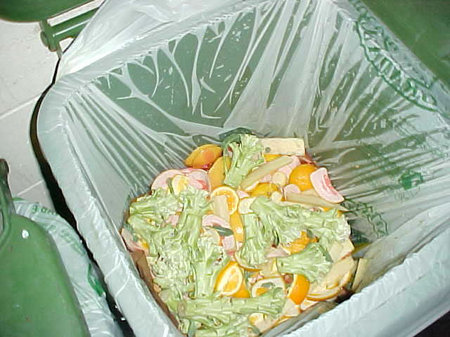Solutions to UK Food Waste

In the UK alone, it’s estimated that 6.7 million tonnes of food waste is produced by households every year, most of which could have been eaten. Householders aren’t the only culprit however; shops, supermarkets and restaurants also throw out food that is fit to eat. Around 20% of the UK’s greenhouse gas emissions come from food waste. This figure seems staggering until you understand that food waste actually releases methane when put into landfill – a gas that is 25% more damaging than carbon dioxide. Why does so much good food end up in the bin? There are several factors at play – from shopping habits to cooking skills, to unclear food labelling.
With more couples working than ever before and the supermarket the shop of choice, people tend to do big weekly shops instead of going every day to buy what they need. This combines with poor meal planning to make people buy too much, or to buy things they later don’t eat because plans change halfway through the week. Consumers throw out food they could have eaten if they planned meals better, but modern shopping habits and lifestyles make this a difficult task. Government have even tried to curb the mass buying of food by urging supermarkets to scrap buy-one-get-one-free offers.
Cooking skills have also seen a decline over the last 40 or so years – for a long time cooking wasn’t taught in schools – at least not to a high standard, and convenience foods mean that people have never had to learn to make their own meals. When confronted with a cupboard full of various ingredients, you might just phone out for a takeaway, but the older generation would cook something.
One of the biggest culprits o f food waste are sell by dates. Food is always labelled with some sort of date, but the labelling has been criticised as unclear and misleading. There is a difference between ‘sell by’ and ‘use by’ but consumers often throw food away when it reaches that date, regardless of its freshness. Often this is because people simply don’t know whether food is fresh or not – they prefer to rely on labelling rather than their own senses.
The love food hate waste campaign was launched to try and curb food waste through raising awareness of what we buy, and improving basic cooking skills. The emphasis is on creating tasty meals, reducing waste for the environment, and saving money. With the right planning and buying we simply don’t have to waste food – most leftovers can even be composted so they don’t have to go straight into the bin.
When it comes to business, a different approach must be used. Sometimes shops have to throw out food due to stock management issues, but that’s not to say it has to go to waste. Good food can be donated to meal kitchens, and bad food can be collected by specialist food recycling companies. These either compost the waste food, or use it to power waste-to-energy plants, creating a renewable source of power. Food doesn’t end up in landfill, and this also helps to decrease our reliance on polluting fossil fuels.